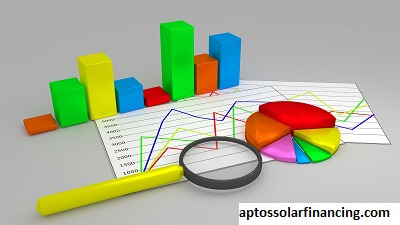Meaning of B&F Finance: An Exhaustive Analysis:
b&f finance:
B&F Finance, Finance is always on the move. The term “B&F finance” comes up very often during budgeting and forecasting talks. Although it might not be word-of-mouth famous like some other financial principles, it goes without saying that it does have significant importance to corporate finance and personal finance. The author defines B&F finance: what does it consist of? In what areas? What makes it so pivotal in today’s financial planning?
What Is B&F Finance?

b&f finance:
B&F finance is the short term referring to Budgeting and Forecasting. Budgeting and forecasting are two separate, though integral elements that combine to make for a crucial foundation for smart financial handling. Budgeting is preparing a plan of revenues expected and expenses covering a specific period, usually a fiscal year. Forecasting refers to an estimate of future financial outcomes resulting from historical data, market trends, and economic indicators.
It is through budgeting and forecasting that an organization or a person can make the right financial decisions, increase resource efficiency, and achieve set financial goals.
Why Budget?
b&f finance:
1. Financial Control:
Budgeting gauges financial performance by giving control over how finances are spent. Organizations can set limits on what amount they spend, where they allocate their resources, and whether what they spend fits within the general goals. The presence of control measures maintains the financial health of the organization.
2. Goal Setting:
Budgets enable goals to be set on a monetary scale. Whether for saving to use personally or for business growth, a budget identifies what needs the most attention and channels the energies to achieving that goal. For businesses, this may be in terms of revenue generation targets, while for individual use, it may include saving funds for a holiday or retirement.
3. Resource Allocation:
Budgets enable organizations to control the productive use of resources. As long as the place where money is going can be traced, then inefficiency areas may then be determined, and the funds then directed elsewhere in their use in a more productive manner. In other words, this might mean that necessary expenses are prioritized over discretionary for individuals.
4. Performance Measurement:
A well-prepared budget provides a basis for comparison with actual performance. Comparing budgeted figures with the actual results regularly allows for the identification of variances that might suggest areas that require an adjustment.
The Role of Forecasting:
b&f finance:
1. Strategic Planning:
Forecasting is a critical activity to help facilitate long-term strategic investment planning, business expansion, and shifting operations based on future expectations. Since forecasts are accurate in indicating the chances of earning revenues, they may enable organizations to seize sources of revenues and market opportunities.
2. Risk Management:
In an uncertain economic condition, forecasting helps in risk management. The uncertainty would allow organizations to review trends and scenarios in the economy with the opportunity to prepare contingency plans against adverse conditions in the economy, such as economic downturns or sudden market volatility.
3. Cash Management:
In any organization or individual, proper cash management includes the effective processing of forecasting. It lets us know what kind of cash inflows and outflows can be expected so that the related investment and debt decisions along with savings can be taken on time.
4. Stakeholder Confidence:
In the event of a publicly traded company, accurate and reliable forecasting through budgeting will enhance the levels of stakeholder confidence. Investors and analysts love transparency and reliability of financial predictions as these can severely hit one’s stock performance and market perception.
Budgeting vs. Forecasting: The Relationship:
b&f finance:
Budgeting and forecasting have different ends but, at the same time, go together to produce good financial management.
Helping Make Data-Based Decisions:
The budgeting process will always need data from which to make information, and forecasting supplies the service with historical trends and data for market analysis to determine realistic budget goals.
Budget Changes:
The fiscal year is uncertain. The economic and financial systems are either in uncertainties or there are unanticipated expenses and revenues all the time during the fiscal year. Periodic budgeting allows a timely change of the budget to agree with actuality.
Continuous Improvement:
The continuous budgeting and forecasting cycles enhance continuous improvement. Reviewing past performance against adjusted future budgets enables an organization to arrive at its final financial strategy by making it better and, thus, efficient in its total.
B&F Finance Implementation:
b&f finance:
Clear Objectives of Budgeting and Forecasting: Organizations and individuals must operate a structured approach by setting clear financial goals comprised of short-term and long-term aspirations. Objectives define the budgeting and forecasting processes.
Gathering Historical Data:
Get appropriate historical financial data comprised of revenue trends, expense reports, and market analysis. All these are used to prepare the basis of accurate forecasting.
Establish a Budget:
A balanced budget will reflect expected revenues together with expected expenses. Ensure that it supports the objectives established and ties into information obtained through the forecasting process.
Performance Monitoring:
Determine deviations from actual performance to budget regularly. Find out why, if there are deviations, particularly operational expenses where this didn’t come about, market changes, or operational inefficiencies.
Have Flexibility:
Be flexible to change both budgets and forecasts as and when required. Economic conditions and business environments can change overnight, and making financial management agile is necessary.
Involving Stakeholders: Engage key stakeholders to participate in budgeting and forecasting. Insights and feedback from stakeholders improve the accuracy and enhance buy-in in the whole organization.
Challenges in B&F Finance:

b&f finance:
B&F finance is the most critical function for an organization, but it has challenges that must be addressed by both organizations and people:
Data Validity:
Erroneous data can result in faulty budgets and forecasts. Historical data reliability is imperative for right and prudent decisions in finance matters.
Economic Changeability:
Economic factors cannot be predicted with full accuracy; hence they may pose more complications to budgeting and forecasting. Concerned organizations must always remain vigilant and nimble with the changing market trends.
Resource Limitations:
This limitation is the availability of resources that smaller companies or organizations cannot handle proper budgeting and forecasting. Technology and financial tool utilization help bridge this limitation.
Resistance to Change:
Cultural resistance in an organization creates problems in the actual implementation of these processes involving budgeting and forecasting. A culture that respects financial transparency and accountability is helpful.
The Future of B&F Finance:
b&f finance:
The future of B&F finance will be shaped by advanced technology. Advances like artificial intelligence, machine learning, and big data analytics change the way budgeting and forecasting are done.
Automation:
Tools for automation can make the budgeting process quicker by reducing time on manually undertaking calculations and requiring updates more often.
Predictive Analytics:
Using predictive analytics allows organizations to see trends and thus make more accurate forecasts, hence making decisions easier.
True Time Monitoring:
Being able to track real-time finances gives an organization an instant view of its financial position and allows for much quicker budgetary changes as well.
Increased Collaboration:
The use of collaborative tools is also quite beneficial as it would open up the opportunity for more involvement in the budgeting and forecasting process, and therefore, encourage more stakeholders with an idea that equates to even better financial planning.










